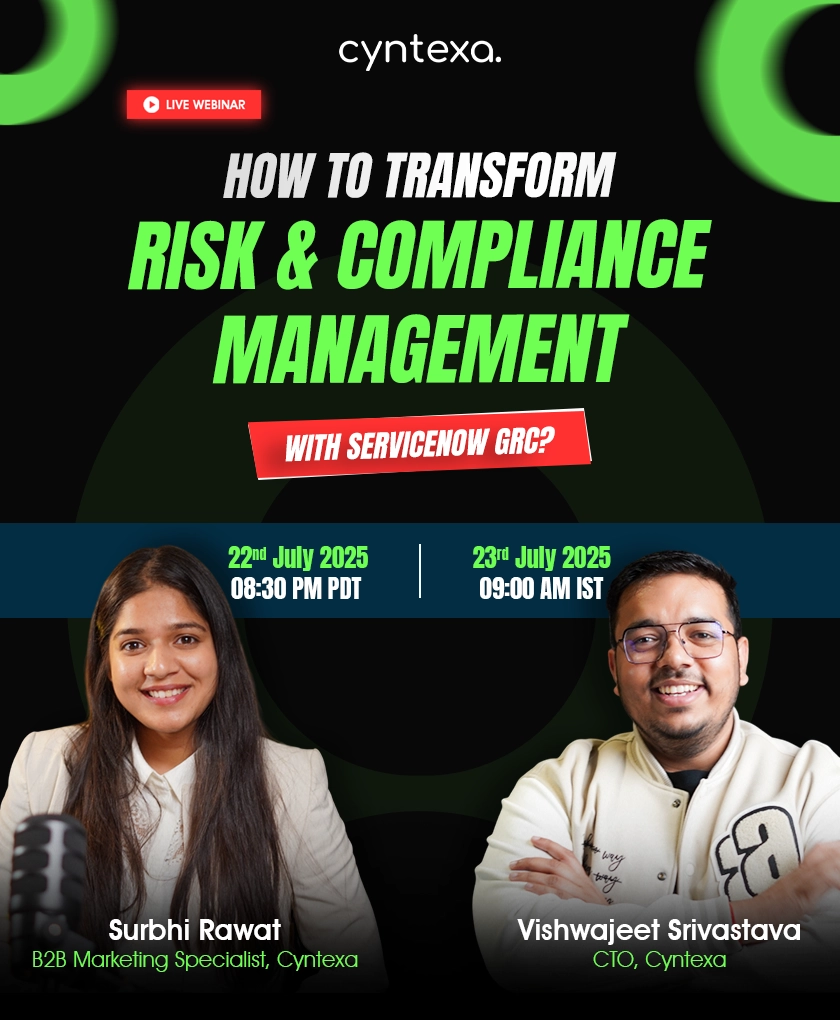AI Agents Are the New Digital Workforce—And Apps Will No Longer Be the Frontline
Table of Contents
For the past 20 years, enterprise technology has been shaped by a single dominant principle: people adapt to software. Applications have defined the way teams operate. Sales teams live in CRMs, service reps live in ticketing systems, and marketing teams struggle between campaign tools and analytics platforms. Whether it’s Salesforce, SAP, or Oracle, every department has learned to work around the limitations of screens, buttons, and user interfaces.
But what happens when that dynamic flips, and technology starts adapting to us instead?
That’s exactly what AI agents are doing.
These intelligent agents sit on top of enterprise systems and serve as an interface between humans and machines. Instead of logging into five systems and stitching together information, users can now describe what they want in natural language, and the agent does the rest like retrieving data, coordinating workflows, and even taking actions.
Why AI Agents Will Replace Traditional Software Interactions


Right now, the way we work is shaped by how software works. Each tool has its own interface, requiring users to switch between apps, remember logins, and manually extract insights from different sources. The learning curve is steep, and inefficiencies pile up.
AI agents, on the other hand, change the interaction model entirely.
Instead of users adapting to software, AI adapts to users.
- No more hunting through databases. Just ask, and the AI finds what you need.
- No more app-switching. One AI assistant connects with all enterprise systems.
- No more routine tasks. The AI completes them behind the scenes.
Use case:
Picture a sales executive who needs to prepare for a client meeting. Today, they might need to:
- Log into their CRM to check recent activity.
- Search their inbox for past emails or conversations.
- Open a dashboard to review financial data.
- Manually compile key insights into a document.
- Updating notes after every interaction to keep the rest of the team up-to-date.
- Review Account-Contact relationship, to use better references and create trust quickly.
- Review previous meeting notes on CRM.
With an AI agent, this process is instant. They simply ask: “Please schedule this meeting with Mr. Charles at 10 AM tomorrow, and help me prepare for it. Review all the previous messages and references that we can use.”
Within seconds, the AI retrieves the latest emails, sales history, customer support tickets, and financial trends—presenting a fully prepared briefing in natural language. Now apply this across marketing, operations, finance, HR, and IT. AI agents aren’t just helpful, they are eliminating friction in decision-making and execution.
How Enterprise AI Agents Actually Work


At a high level, enterprise AI agents work a lot like a well-organized team. When a user makes a request, the AI doesn’t handle everything alone—it delegates, coordinates, and executes through a structured system of roles working together behind the scenes.
Here’s a breakdown of how it works:
1. Primary Agent (User-Facing)
This is what the user interacts with directly, typically embedded in collaboration platforms like Slack, Microsoft Teams, or even a voice interface. It understands the intent of a request and passes it to the orchestrator.
2. Orchestration Agent
The brain of the operation. This agent plays the role of a behind-the-scenes coordinator. It breaks down the user’s request into multiple tasks, decides what systems or tools are needed, and assigns jobs to other specialized agents. It ensures things happen in the right order, with the right data.
3. Specialized Agents
These are task-specific agents that interact with systems like Salesforce, SAP, or external APIs. One might pull account data from Sales Cloud, another might check support tickets in Service Cloud, and a third might validate payment status via an integration with Stripe or NetSuite.
Each agent focuses on a narrow function, executes it quickly, and returns the result to the orchestrator.
Why This Changes the Role of Enterprise Applications (But Doesn’t Replace Them)
Now, let’s be clear: AI agents are not replacing your CRM, ERP, or analytics tools. They’re not killing the SaaS model. Instead, they’re decoupling the interface layer from the logic and data layers.
In simple terms, this means the application still holds the business rules and data—it’s just no longer the place where the user needs to “go” to get things done. So your Salesforce instance continues to be the system of record. But now, instead of teaching every rep how to create complex reports or build dashboards, they can simply ask:
“Which opportunities are most likely to close this quarter?”
And the AI agent uses predictive scoring from Einstein, queries custom fields via SOQL, and interprets historical win rates to return a shortlist with probability scores. This is where AI agents shine: removing friction, not replacing systems.
The Need for a Unified, API-First, Composable Platform


To enable agents to operate at scale, the underlying enterprise architecture must support:
- Data interoperability across departments and systems
- Composable APIs that expose workflows, not just endpoints
- Security, governance, and observability for AI-generated actions
Salesforce is uniquely positioned here. The platform already offers:
- Customer 360: Centralized view of the customer across all clouds
- Data Cloud: Real-time, harmonized data at scale
- Einstein 1: Unified metadata, LLM access, and actionability
- MuleSoft: Connectors to every major third-party system
This matters. Many AI tools can read data—but few can “act” with enterprise-grade accountability. That’s what Salesforce’s native AI agents can do—trigger a Flow, submit an approval, or update a record with complete audit trails.
Organizations that have fragmented data layers and disconnected systems will find it harder to implement agents that can work autonomously, as orchestration becomes brittle or incomplete.
What Leaders Need to Do Now
The growing inclination towards AI Agents as the primary interface for the enterprise automation is giving teams a new horizon to work and benefit from the technology. But adoption isn’t a piece of cake. It demands for careful and strategic planning across data sets, systems and organizational readiness.
Here’s what business and technology leaders must focus on today to stay ahead:


1. Establish Governance, Guardrails, and Trust Mechanisms
As soon as agents start acting on behalf of users—updating records, sending emails, triggering approvals—trust becomes critical. Governance must evolve alongside capability.
This includes:
- Role-based permissions for what agents can and cannot do
- Audit trails for every action taken by an agent
- Feedback loops where humans can review, approve, or override actions
- Clear visibility into agent decisions (why it did what it did)
Action: Don’t treat agent deployment as a technical project alone. Involve risk, compliance, legal, and operations teams early to define boundaries, escalation paths, and ethical use policies.
2. Identify Workflows Ripe for Delegation
AI agents aren’t meant to automate everything overnight. The most successful implementations start by identifying high-volume, low-complexity, rule-based processes that take up time but don’t require deep judgment.
Some ideal candidates are
- Customer FAQs and status updates
- Employee onboarding tasks
- Sales meeting prep and pipeline summaries
- Order verification and invoice matching
Avoid starting with edge cases or emotionally sensitive tasks where human nuance is essential. Build early success by delegating routine work—then scale.
Action: Create a catalog of existing business processes. Tag them by frequency, effort, and predictability. Use this to build your AI agent roadmap.
3. Evaluate Your Technology Stack for Agent Readiness
Not every system is built to support autonomous agents. AI agents depend on composable, API-first platforms that allow programmatic access to data, business logic, and workflows. Systems without proper APIs, metadata exposure, or automation capabilities become blockers.
Look at the systems your teams rely on most:
- Are they extensible via APIs or MuleSoft integrations?
- Can they support automation through Flows or event-driven architectures?
- Do they offer identity and access controls that allow fine-grained permissions?
Action: Perform a technical audit of your core systems. Flag applications that are “black boxes” and prioritize modernizing or integrating them through connectors. AI agents won’t work if they’re blindfolded.
4. Assess Data Accessibility and Fragmentation
AI agents are only as powerful as the data they can access. If key customer, operational, or financial data is siloed across disconnected systems, agents won’t be able to respond effectively to even basic queries.
Start by mapping your data sources:
- Where is customer data stored (CRM, ticketing, marketing automation)?
- Is data accessible via APIs or stuck behind legacy systems?
- Are records unified with a consistent data model, or are they fragmented across business units?
Action: Prioritize a data strategy that emphasizes cleanliness, interoperability, and real-time access. AI agents don’t need all data—but they need the right data, in the right format, available instantly.
5. Invest in Change Enablement, Not Just Technology
Finally, remember: agents may be digital, but the users they serve are human. A successful shift to agent-first interaction depends just as much on training, mindset, and support as it does on engineering.
- Train users to interact with agents effectively using natural prompts
- Set realistic expectations: Agents will get smarter over time
- Encourage feedback from users to refine behavior and expand capabilities
- Help teams see agents as teammates, not threats
Action: Build an enablement program alongside your AI rollout. Include prompt training, sandbox testing, office hours, and real-time support.
Leaders today are no longer just deciding what software to buy; they’re more concerned about how their workforce interacts with technology. The age of clicking through screens is ending. The era of asking, receiving, and automating is here.


AI Agents Are the Future—Are You Ready?
We’re moving towards a world where apps take a backseat, and AI agents take over the frontline. Instead of spending time scrolling back and forth to the software, professionals will directly engage with AI assistants that do the work for them.
AI agents are here—not just to assist—but to fundamentally change how work gets done. To effectively adopt AI agents for your business, it’s essential to seek guidance from an expert in AI Agent implementation.
If Salesforce was once the system of engagement and record, Agentforce and Einstein 1 are now becoming the system of execution. This is not a UI revolution. It’s a workflow revolution.
And we’re just getting started.
Don’t Worry, We Got You Covered!
Get The Expert curated eGuide straight to your inbox and get going with the Salesforce Excellence.
AUTHOR
Vishwajeet Srivastava
Salesforce Data Cloud, AI Products, ServiceNow, Product Engineering
Co-founder and CTO at Cyntexa also known as “VJ”. With 10+ years of experience and 22+ Salesforce certifications, he’s a seasoned expert in Salesforce Data Cloud & AI Products, Product Engineering, AWS, Google Cloud Platform, ServiceNow, and Managed Services. Known for blending strategic thinking with hands-on expertise, VJ is passionate about building scalable solutions that drive innovation, operational efficiency, and enterprise-wide transformation.


Cyntexa.
Join Our Newsletter. Get Your Daily Dose Of Search Know-How









